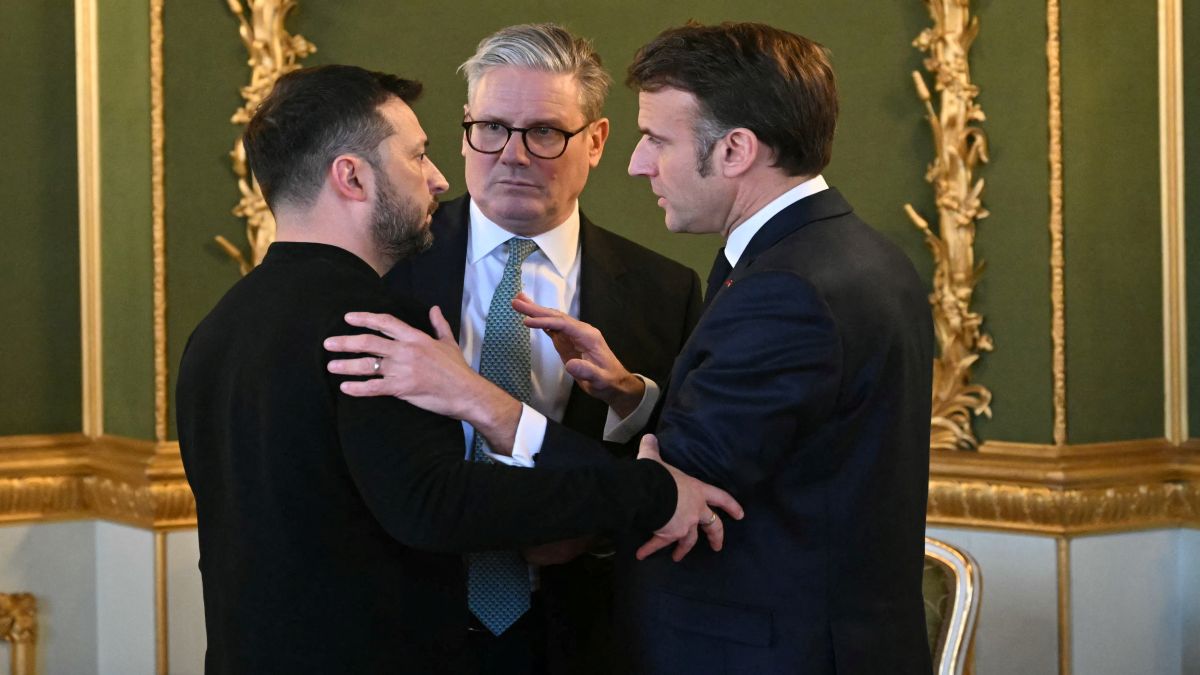After the disastrous Oval Office spat, European and Nato leaders stood shoulder to shoulder with Ukrainian President Volodymyr Zelenskyy at the London Summit on Sunday (March 2). The talks, which brought together 18 allies, came just two days after US President Donald Trump and his Vice President JD Vance berated Zelenskyy in front of reporters at the White House.
There were a lot of hugs exchanged at the summit, but it didn’t stop there. There was also real substance as European and Nato allies committed to spending more on defence and stepping up to defend their borders against Russian aggression, with an eye on a US partner that Europeans are not sure they can now rely on.
France and UK also announced a one-month truce in Ukraine “in the air, at sea”. Speaking to a French newspaper on his return after the summit, Emmanuel Macron said, “We want peace, but not at any price, without guarantees.”
But what did we learn from the London summit? Was it only symbolism or was there real substance?
Zelenskyy receives a warm welcome
The Ukrainian president was warmly embraced by many world leaders at the summit — there was a hug with British Prime Minister Keir Starmer and another with French President Emmanuel Macron.
There were also thousands of demonstrators who showed up at UK’s Downing Street to extend support for Kyiv, some even dressed in the country’s blue and yellow national colours.
Many observers noted that the welcome in London was in stark contrast to the reception Zelenskyy received at the White House just two days ago. There, Trump accused Zelenskyy of not being grateful enough for US aid and not being “ready” for peace with Russia. Their argument, playing out on live television, raised fears that Trump wanted to force Kyiv into a peace deal that would give Russian President Vladimir Putin what he wants.
A ‘coalition of the willing’
Following the London Summit, as it has been dubbed, British PM Keir Starmer announced the decision to develop a coalition of the willing to defend a deal in Ukraine and to guarantee peace.
“(European allies) will go forth to develop a ‘coalition of the willing’ to defend a deal in Ukraine and to guarantee the peace,” Starmer said during a press conference following a European leaders summit in London. “Not every nation will feel able to contribute but that can’t mean we sit back. Instead those willing will intensify planning now with real urgency.”
“The UK is prepared to back this with boots on the ground and planes in the air. Together with others, Europe must do the heavy lifting,” Starmer said. “This is not a moment for more talk… If you want to preserve the peace, you have to defend the peace.”
The UK and France have spearheaded this idea. However, it remains unclear who or what will be involved in this.
Starmer in his remarks said that he spoke to Donald Trump on March 1 to deliver plans for the proposed coalition, and added that the proposed coalition will succeed on the basis that Europe works “with the US and that it will have US backing.”
While Starmer did not specify which other countries would participate in the coalition, he did add that “a number of countries have indicated they want to be part of the plan we’re developing”.
“The purpose of today’s meeting was to unite our partners around this effort. To strengthen Ukraine, and ensure a just and enduring peace for the good of all of us,” Starmer added. “We have to learn from the mistakes of the past. We cannot accept a deal like Minsk which Russia can break with ease.”
New military aid for Ukraine
British PM Keir Starmer in his remarks at the London summit also announced an additional £1.6 billion ($2bn) of UK export finance to buy more than 5,000 air defence missiles. This comes on top of a £2.2 billion loan to provide more military aid to Ukraine backed by profits from frozen Russian assets.
These missiles will be manufactured in Belfast at a factory operated by Thales, a French arms manufacturer. The lightweight multirole missiles (LMMs) are intended to protect against Russian drone and missile attacks.
Moreover, Starmer added that “military aid will keep flowing into Ukraine” and “economic pressure will continue on Russia”.
Europe’s defence spending to see a surge
While it is unsure if other European countries will follow the UK’s example of increasing defence spending, Nato chief Mark Rutte said that “more European countries will ramp up defence spending”.
He described the increased defence spending as “very good news” and reiterated the need for “more of a fair balance” with the US. He also told reporters that the first step was to make sure there is a peace deal before there are discussions about how to guarantee it.
This comes after the UK announced that it would increase defence spending to 2.5 per cent of GDP by 2027, from the current 2.3 per cent.
Later, French President Emmanuel Macron told Le Figaro newspaper that European countries should boost their defence spending to between three and 3.5 per cent of GDP — a much higher target than Nato’s two per cent. “For three years, the Russians have spent 10 per cent of their GDP on defencce,” said the French president. “So we have to prepare for what’s next.”
It is left to be seen if Europe can stand up for Ukraine in this long winding war. Moreover, will Europe be able to repair the US-Ukraine ties? Will Starmer and Macron be able to sway Trump back to their side? It is unknown for now — but there are signs that it will happen as Zelenskyy said he is ready to sign the minerals deal with the US .
With inputs from agencies
)